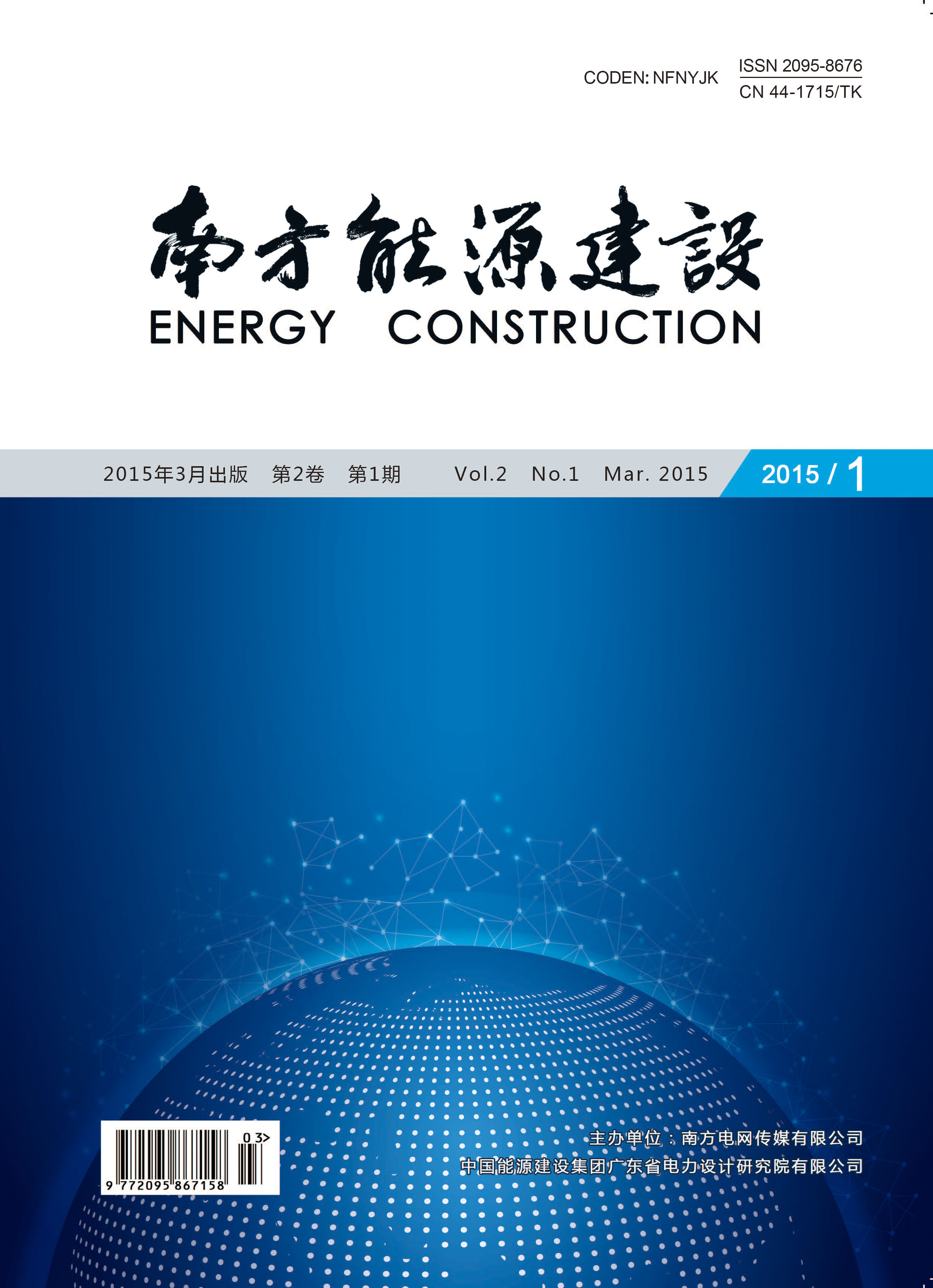-
低碳技术是既满足能源需求又限制二氧化碳排放的技术,其内容大致分为三个方面:源头控制的“无碳技术”,即以无碳排放为根本特征的清洁能源技术;过程控制的“减碳技术”,指生产、消费和使用等过程的低碳;末端控制的“去碳技术”,指捕获、封存和利用排放的碳元素[1-2]。低碳技术创新是通过技术创新实现节约能源资源、节能减排和保护生态环境的技术创新模式[3]。
各国低碳技术创新的侧重点往往因其在资源禀赋、经济水平、科技实力等方面的差异而各有不同,如美国侧重清洁煤与碳捕集技术、欧盟侧重可再生能源和绿色能源技术等[4]。我国现阶段能源消费以煤炭为主,新能源技术尚不能大规模商业化应用,能源使用效率不高,在中短期内,能够促使能源效率提升的清洁燃煤技术潜力巨大,且具有良好的经济和社会效益[5-6]。在我国现有的低碳技术中,有的处于推广阶段并初具产业规模,有的尚处于研发阶段亟需资金和政策支持,有的在国际同行业中具有领先示范优势,有的处在国际低碳技术产业链的中低端,总体上看,我国低碳核心技术及其研发力量不足已经成为普遍瓶颈[7]。综上,国内外能源经济的发展趋势已经对我国低碳技术研发与应用提出新的要求,资源与能力方面的缺口对提高低碳技术的创新性和系统性形成倒逼之势。
HTML
-
超循环理论是德国科学家艾根于1971年创立的,他指出循环现象分为不同的层次:第一层次是转化反应循环,整体来看是个自我再生过程;第二层次称为催化反应循环,整体来看是个自我复制过程;第三层次的超循环则是由各个自催化的循环单元通过功能耦合而联系起来的高级循环,系统通过超循环的方式不断积累能量,当达到一定的程度时,就发生了突变,促使系统向更高层次演化[8]。超循环理论是基于系统化和自组织性,用于研究非平衡开放的复杂系统,其应用范围逐步从生物领域扩大到经济和社会领域。
根据超循环理论,低碳技术创新系统内的科研、生产、经营活动以及为适应外部环境而进行的组织演变是一种超循环进化行为,系统内的主体既竞争又协同,进而推动低碳技术创新成果的动态演化和应用,系统具有超循环的本质特征[9]。
1)开放特征。低碳技术创新系统与外界进行双向的物质、信息和能量的交换,并通过新陈代谢来维持系统的自身组织及其结构的稳定性。
2)自适应与自稳定特征。低碳技术创新系统具有自适应能力,能够促进系统内各个主体形成一个共生、平衡的结合体并维持组织生命的延续,系统的自适应特征与其是否具有核心竞争力和持续发展能力密切关联。当外部环境发生变化、原有平衡被打破时,系统可以开放地通过自我调节与外界环境之间的物质、信息和能量交换以达到新平衡。
3)突变和选择特征。在超循环演变过程中,低碳技术创新系统内各主体的目标、组织学习能力不同,获得的竞争优势也不同,因此呈现出差异式突变,突变后各主体在系统中进化、蜕变或淘汰。上述竞争超循环对系统内各主体进行选择,系统内存在竞争并非没有合作,而是竞争与协同整合并存。
-
低碳技术创新是综合考虑外部环境和内部资源与能力缺口的共同结果,在外部环境分析上,需要从物质、制度、精神和行为等层面加以综合考虑,以便确定合理的技术创新方向与功能应用领域。低碳技术创新系统的超循环属性体现在:外部环境会影响系统内各主体的动态认知,各主体根据自身对外部环境的动态认知及时更新内部要素,挖掘出低碳技术创新的资源与能力方面的缺口,并借助于组织惯例和市场行为将上一轮低碳技术创新带来的经济利润投入到这些资源与能力的开发中,挖掘新的技术创新和功能应用方向,新的功能应用又可以显著改善外部环境。因此,本文提出了如图1所示的低碳技术创新系统。
图1所示低碳技术创新系统主要由四个核心部分构成,即外部环境、系统主体、系统功能应用、催化循环过程,这四部分构成了开发技术创新方向与促进创新成果应用的持续过程,系统具有自适应和突变的特征,主要表现在:一、自适应特征,超循环系统内的各主体,没有进行低碳技术创新合作前,相互独立地存在着很多自反应循环,如科研循环、教学循环、生产循环、营销循环、政策循环、监督循环等,在既定的外部环境中,这些反应循环正常有序地进行着,保证各自功能的实现;二、突变特征,各主体在自适应的过程中会出现偏差,如外部环境出现改变,造成相关主体目标和能力发生偏差,类似于基因突变,在新的环境和合作领域中,它们会自动重新联系组合,形成新的反应循环。
-
中英(广东)碳捕获、利用与封存产业促进与学术交流中心(简称中英CCUS中心)是一个国际性的学术与产业联盟,在广东省相关行政部门的指导下,以广东省电力设计研究院、英国爱丁堡大学、英国CCS研究中心和香港清洁化石能源公司为发起单位,整合相关专业技术和管理人才组建,成员单位覆盖电力、建材、冶金、交通、石化等领域。旨在促进国内外工业界和学术界在低碳经济政策及发展战略、碳捕集与封存技术、清洁煤技术等方面的交流与合作,通过示范项目促进技术成果转化为产业,助推低碳经济社会可持续发展。
-
中英CCUS中心作为一个开放系统有自己生存的外部环境,并分别从物质、制度、精神和行为等四个层面与外部环境发生相互作用,因此,需要正确分析并适应外部环境,以保证组织内部学习、低碳技术开发、创新成果应用更具柔性。外部环境分析的任务包括:(1)确定哪些环境要素将对低碳技术创新产生影响以及影响程度如何,从而确定关键环境要素及其优先顺序;(2)准确识别服务范围内的竞争对手,并预测它们对竞争环境可能做出的反应,确定自己的相对竞争优势[10];(3)明确服务对象的行为需求,结合自身的竞争优势开发技术创新方向,必须特别地对经济形势、市场需求、技术动态、制度保障、行为意向、精神文化等外部环境要素深入分析。需要强调的是,这些外部环境要素对低碳技术创新的影响程度因不同区域的资源禀赋和经济发展阶段不同而存在差异,中英CCUS中心立足广东,结合广东国家低碳省试点工作要点和区域经济发展特点,综合判断地域环境、产业链、资源、市场等因素对低碳技术创新影响的优先顺序。
-
中英CCUS中心是由政府、高校(含科研机构,下同)、企业等相互独立又相互关联的主体构成的低碳技术创新超循环系统:高校属于科学场域,是创新知识的发源地,高校从外部环境获得各种有关需求和信息,把握创造/引进知识的方向,并将创造的低碳技术知识转移到经济场域的企业中去;企业从科学场域中获得低碳技术知识,依次经过企业的引进、消化、吸收、再创新[11],将加工后的知识投入到生产中去,再将成果投向市场,即可获得经济利益,企业反过来再将部分经济利益回流至高校,形成研发经费,以支持高校技术创新平台建设和能力提升。同时,企业还通过市场调研了解并引导消费者的需求;政府则在政治、经济相关政策的允许范围内,通过出台有利政策、提供研发资金和建立研发平台等方式去推动产学研合作的发展,更好的促进高校、企业、政府协同发展。与此同时,各个系统主体会将政策、环境等方面的需求反馈给政府部门,政府会相应地调整策略、维护市场环境,制定出更加适合高校、企业、政府合作创新的指导政策。
-
中英CCUS中心的催化循环系统就是低碳技术合作中多个自反应循环的组合,如科研循环、教学循环、生产循环、营销循环、政策循环、监督循环等,在催化循环反应中,一个反应循环的输出往往是另一个反应循环的输入,自反应循环之间既竞争又协同,构成一个相互依存、互为因果的催化循环。中英CCUS中心的超循环系统是由多个催化循环系统相互联合构成的,即各催化循环在功能上耦合起来,通过催化剂相互支持,形成一个超循环系统。中英CCUS中心的催化循环与超循环如图2所示。
图2所示中英CCUS中心的高校、企业、政府合作超循环系统的作用是可以更快提高企业的技术创新效率并使高校有了检验理论的实践基础,各主体之间良好的合作成效具有催化作用,催化剂就是知识转移,其催化机理为通过知识转移让各个系统主体掌握知识且协调价值分配以推动超循环合作。
-
中英CCUS中心将低碳技术创新超循环系统的功能应用定位于低碳产业、低碳能源、低碳生活、低碳城市这4个方面:
1)制定低碳产业路线。针对我国当前的低碳产业发展现状及核心技术详细制定发展路线图,对低碳产业及核心技术进行全生命周期分析和前瞻性研究,明确其重要阶段所需的材料支持、配套技术和设备设施,有针对性的进行内部研发或外源引进,避免在技术攻关或成果转化的关键环节因辅助资源瓶颈而制约了整个产业的发展。
2)推广低碳能源普及。中英CCUS中心以广东省低碳示范项目为依托,致力于促进广东低碳能源的产业聚集:无碳技术方面,通过对核能、太阳能、风能、生物质能等可再生能源的优化设计,源头上做好低碳能源的规划布局;减碳技术方面,积极开发高能耗高排放领域的节能减排技术、油气资源和煤层气的勘探开发技术等;去碳技术方面,高度重视燃煤发电机组的环保指标,开展技术攻关使其主要污染物排放量达到与燃气发电机组相当的水平,大力推广清洁燃煤技术的产业化和商业化。
3)促进低碳生活行为。低碳技术应用可以有效促进居民低碳生活行为,低碳技术创新可进一步规范、提高现有的民用和商用设备的能效标准,可使国家在低碳节能方面获得可持续的利益。中英CCUS中心是辅助政府及企业进行低碳技术研究与应用的智囊机构,将广泛利用各种方式定期向社会通报减排进展、成效与不足,中心成员还将在自身的业务领域内和日常生活中对公众宣传低碳经济和低碳生活的意义,努力使越来越多的单位和个人转变思想观念,执行低碳的生活方式和消费模式。
4)规划低碳城市发展。低碳城市指以低碳经济为发展模式及方向,在市民以低碳生活为行为特征的基础上,以低碳社会为管理蓝图的城市。中英CCUS中心将通过助推低碳理念在全社会各个领域的渗透,包括低碳的能源结构、低碳的工业发展路径、低碳的消费模式、低碳技术支撑等,保障以经济转型带动社会转型,同时,通过合理的城市规划构建低碳城市发展的结构性基础。
3.1 系统的外部环境
3.2 系统的主体定位
3.3 系统的催化循环与超循环
3.4 系统的功能应用
-
在动态而复杂的市场环境中,低碳技术创新系统更加开放,表现为:参与主体更加广泛,系统内物质和能量交换更加频繁,突变演化逐渐取代长期平衡而成为常态,单一地考虑外部环境要素或者内部资源要素都无法准确地把握低碳技术创新的方向和规律。因此,本文以超循环理论为基础,将政府、高校、企业、市场、区域政策和经济环境纳入一个系统,构建的低碳技术创新超循环模型具有三个显著特点:
1)突破了技术创新线性发展的视角限制,更多地从系统层面分析了低碳技术创新的外部环境和内部资源,该模型的核心是以知识转移为催化剂的反应循环,揭示了竞争、协同和突变演化等规律。
2)分析了各主体在低碳技术创新超循环系统中的地位和关系,拓展了超循环系统的功能应用领域,同时,还为地方政府和企业制定符合区域环境要求的低碳发展路径提供了范式借鉴。
3)在低碳技术创新超循环系统中,官产学研合作一旦形成循环,系统也就有了维系和延续生命的新陈代谢运动,构成了低碳技术创新的适应、突变、选择等可持续进化发展过程。









 DownLoad:
DownLoad:
